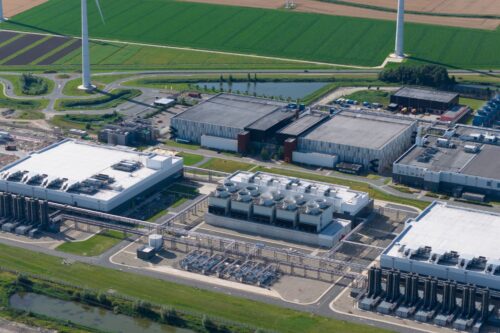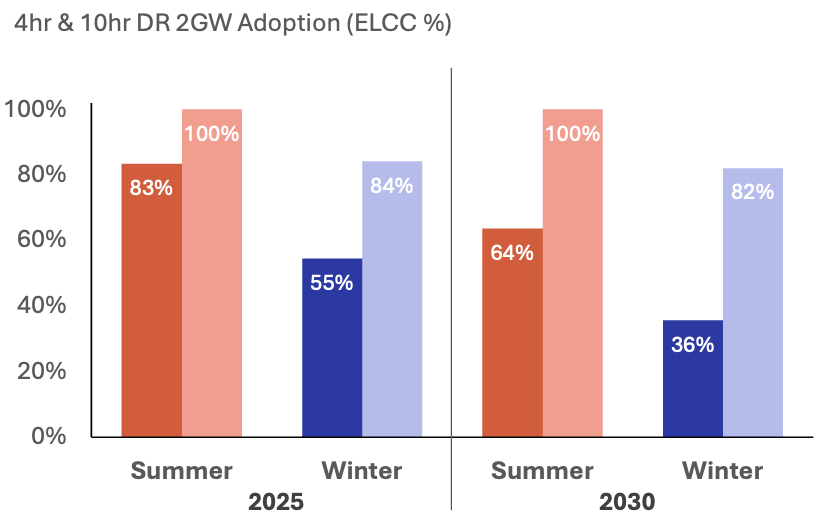
SPP is in the middle of a reliability rethink. The region’s highest-risk hours are no longer just hot summer afternoons. Recent winters have brought long cold events when demand stays high, so SPP updated its planning expectations so that Load Responsible Entities (LREs) demonstrate enough dependable capacity in both seasons. Interconnection and supply-chain timelines make it hard to add new plants quickly, which is why many LREs are looking at demand response as a near-term tool to manage risk.
In a new whitepaper,1 E3 looks at the following question: if SPP accredits capacity using Effective Load Carrying Capability, how much dependable capacity should it count for demand response? In plain terms, “capacity accreditation” is the amount of dependable capacity the market credits to a resource for meeting reliability obligations. ELCC measures how much perfectly reliable capacity a resource can replace while keeping reliability the same, and SPP already uses ELCC for wind, solar, and storage. This study applies that same yardstick to demand response so it can be counted on equal footing.
Read the paper >
The focus is on curtailed demand response – customers that commit to reduce load when called during system stress, with performance measured concurrently. The capacity accreditation of DR is determined by 3 key parameters: how long a call can last in a day (duration), how many total hours are allowed in a season (seasonal call limit), and how much enrolled load is available across SPP (adoption). Calls are restricted to once per day. The analysis also reflects how SPP’s critical hours show up: summer risk often clusters in 4–6 hour afternoon and early-evening blocks, while winter risk can stretch across most of the day during severe cold.
The study finds that, with current levels of adoption, in 2025 a four-hour program earns an ELCC of about 83% in summer and 55% in winter. A ten-hour program reaches about 100% in summer and 82% in winter, reflecting its ability to stay on through long winter events. In 2030, with SPP expected to add more variable resources and storage, the highest-risk periods in the winter can last eight, ten, or more hours, so four-hour accreditation declines while ten-hour holds its value.

A practical design takeaway is that the length of each call has a greater effect on accreditation than the total number of hours a program can be called in a season. Across hundreds of weather and outage simulations, the system needed only about ten total event hours per year on average to deliver the ELCC values above. Even in the most severe modeled years and highest DR penetration modeled (6 GW), totals remained roughly 83 hours in the hottest summer and 72 hours in the harshest winter for ten-hour DR.
Scale brings familiar saturation effects for energy-limited resources. The first 2 GW of DR provide value that is aligned with system need, especially when each call can last ten hours. As DR adoption rises, the toughest hours stretch out and shorter-duration DR loses incremental capacity value through diminishing returns. In 2025, four-hour ELCC falls from about 83 percent at 2 GW to about 50 percent at 6 GW, while ten-hour declines by only about 11 percent over the same range.
This report shows DR’s accredited values on par with other supply-side options, and that DR can be a faster near-term solution given development delays for new supply.

Stepping back, the study offers guidance for how LREs and large customers might think about dependable demand response in SPP. Four-hour DR appears well suited to concentrated summer peaks, while ten-hour DR provides value during extended winter conditions. Seasonal caps can remain reasonable at modest scale, since they are not usually the binding constraint. Accreditation based on performance in critical hours using ELCC places DR on comparable footing with other resources, and in this role DR can help reduce near-term reliability risk while longer-term generation and transmission projects advance. Download the paper here.
- This paper was partially funded by Google LLC (Google), who reviewed the analysis prior to publication. ↩︎


